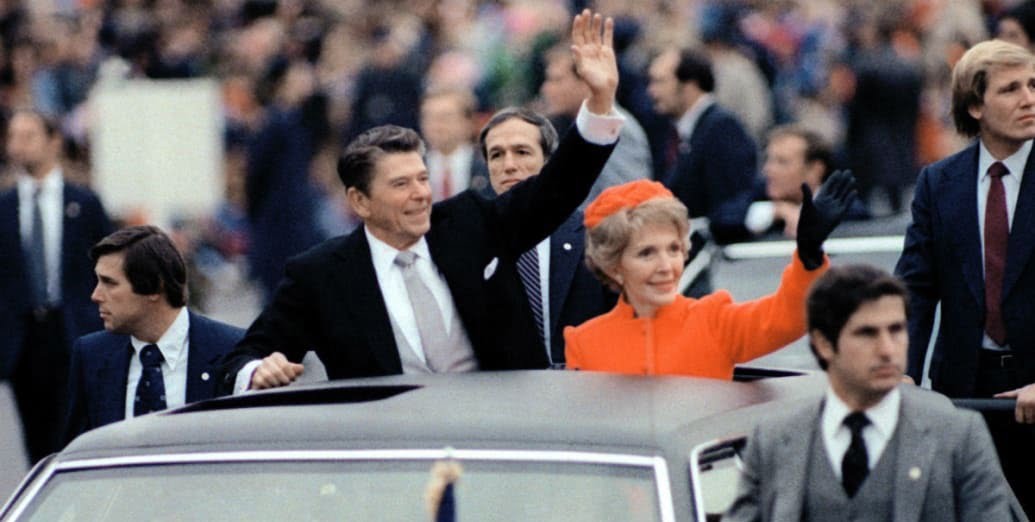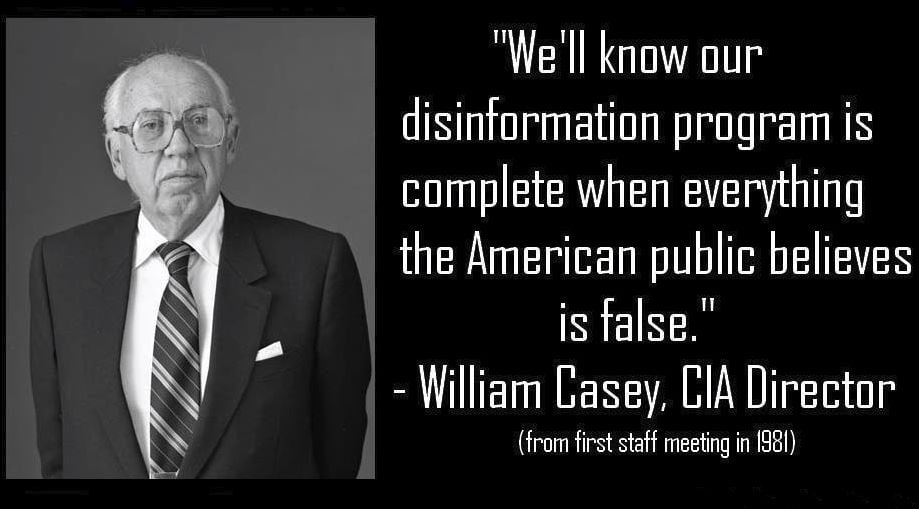A deal worked out by during the 1980 US Presidential election between the team of Ronald Reagan and the Iranians to prevent the successful resolution to the Iran hostage crisis just before the 1980 election which would have given Jimmy Carter an electoral boost. Although the timing of the event was obviously suggestive (the hostages were released just minutes after Reagan was inaugurated) and independent journalists have discovered supporting evidence, the claim was investigated by the House October Surprise Task Force which declared it unproven.
The 1980 Reagan-Bush campaign bargained secretly with Iranian radicals for the postponement of the liberation of 52 Americans that they were holding hostage. These hostages were employees of the US embassy in Iran’s capital city of Teheran, which had been stormed by militants loyal to the Ayatollah Khomeini in November 1979. This secret deal, known as the October Surprise, frustrated the attempts of US president Jimmy Carter to obtain the hostages’ release in time for the elections in November. This failure cost Carter his reelection, and swept Republican candidate Ronald Reagan into the presidency.
The hostages were freed the same day Reagan was sworn in as his nation’s fortieth president on January 1981. What was in it for the Iranians? Weapons, tons of them. Iran needed them badly in order to repel an invasion by Iraq. The Iran-Iraq war lasted from 1980 to 1988 and took approximately one million lives. The much-publicized wars in Central America in those years positively pale in comparison to the horror and carnage of this Middle East war, which was almost certainly the bloodiest of that decade. The October Surprise conspiracy and the arms deals related to the Iran-Iraq war led to the Iran-Contra affair, the biggest political scandal of the 1980’s.
This is very serious business: aiding and abetting a kidnapping, secretly undermining a president’s foreign policy- with the express purpose of tilting election results at home, high treason. You could fry in the electric chair for less than this.
Public allegations of such a secret deal go back at least to 1987, when they appeared in a book titled Out of Control by journalist Leslie Cockburn, who herself had reported on Contra atrocities and on the Iran-Contra scandal for CBS and PBS Frontline. Robert Parry, then with Associated Press, also did some of the earliest reporting on this affair.
Official narrative
In November 1991, both Newsweek and The New Republic published matching stories on their covers, claiming to have debunked the October Surprise allegations. They stated that Casey could not have made the trip to Madrid in 1980, since he was booked in London for a morning session of a conference on July 28, so he could have made a side trip to Madrid. However, Consortium News claimed in 2013 that “the magazines had failed to do the necessary follow-up interviews, which would have revealed that Casey was not at the morning session on July 28. He didn’t arrive until that afternoon, leaving the “window” open for Hashemi’s account.”[1]
In March 1992 the House October Surprise Task Force was convened, supposedly to investigate the truth of this theory. Following the publication of its final report in January 1993, the Task Force chairman Rep. Lee H. Hamilton published an editorial in The New York Times summarizing the Task Force conclusion that “there was virtually no credible evidence to support the accusations.”[2]
Wikipedia continues to refer to it as a “conspiracy theory” only.
Problems
Evidence has continued to mount that the so-called “theory” is in fact correct. Suspicious deaths of people investigating the story and some of those who may have had key evidence have prompted others to go on the record and testify that there was, in fact, a conspiracy. Even Wikipedia acknowledges this (though the page title steadfastly categorizes it as a ‘conspiracy theory’), and contains a bunch of interesting material.
Enquiry chair, Lee H. Hamilton, appears to have been chosen as a safe pair of hands to settle an official narrative – he has a history of such. However, in 2013, Hamilton was emailed about File:2007-0491-F,Folder1,Part5-b(dragged).pdf which revealed that in 1991 a deputy White House counsel working for then-President George H. W. Bush was notified by the State Department that Reagan’s campaign director William Casey had taken a trip to Madrid, something that was concealed from the House October Surprise Task Force. In the face of such evidence, even Hamilton admits to having “second thoughts”.[3]
A formerly TOP SECRET memo to the CIA Director written by the Agency’s Office of Political Analysis shows that as early as August 1980, the Agency had concluded Iranian hardliners such as Ayatollah Khomeini were “determined to exploit the hostage issue to bring about President Carter’s defeat in the November elections.” The memo, issued days after Khomeini was alleged to have accepted the Reagan campaign’s offer, appears to have been either unavailable to or ignored by those composing the Joint Report of the October Surprise Task Force. While the document doesn’t prove the Reagan campaign intended to collude with Iran, it does document Iran’s motives and matches the October Surprise narrative outlined by former CIA officers George Cave and Duane “Dewey” Clarridge.
But the most explosive piece of October Surprise evidence is most certainly a Russian intelligence report sent to the Task Force on January 11 1993, just as the investigation was drawing to a close (11). The six-page document stated that Soviet intelligence knew that Bush, Casey and other US Republicans had met secretly in Europe with Iranian officials in 1980. Congressman Hamilton told Parry that he did not recall Barcella informing him of any Russian report. Several other members of Congress who formed part of the Task Force likewise told Parry they never saw such a report. Barcella did not mention the Russian report at the January 13 1993 press conference in which the Task Force presented its final findings.
Contradictory testimonies
Former CIA pilot John Lear, told a pilots’ group in 2004 how he made a covert flight of arms to Iran as a payment part of the exchange, making it effectively a precursor to the Iran-Contra affair:
- “George H. W. Bush was flown in a BAC 111 one Saturday night to Paris to meet with the Ayatollah Khomeini. Bush offered… Khomeini a deal whereby if he would delay the release of the hostages held in Tehran until Reagan’s inauguration, the administration would supply unlimited guns and ammunition to the Iranians. In order to get Bush back for a Sunday morning brunch so that nobody would be alerted to his absence he was flown back in an SR-71 from Reims field near Paris to McGuire AFB. Of course Reagan won, the hostages were released and one of my jobs in Cairo was to deliver those arms from Tel Aviv to Tehran. Unfortunately, the first airplane in, an Argentinean CL-44 was shot down by the Russians just south of Yerevan and Mossad who was running the operation didn’t want to risk sending my 707. The arms [were] eventually delivered through Dubai, across the Persian Gulf and directly into Tehran.”[4]
Oswald LeWinter claimed to have provided security during a meeting in Paris that involved William Casey, soon to become CIA director, George H. W. Bush and CIA official Donald Gregg. However, he later claimed his testimony “had been a complete fabrication.”[5]
Lance deHaven-Smith wrote in 2010 that “given what is now known about Iran-Contra, it appears likely that the Iran-Contra operation grew out of the October Surprise agreement”.[6]
The Camarate air crash in December 1980 appears to have been an assassination of the Portuguese Defense Minister, Adelino Amaro da Costa, who had said that he had documents concerning the October surprise and was planning on taking them to the United Nations General Assembly. In 2013 José Esteves told the Portuguese parliamentary X Commission that Frank Sturgis (of Operation 40) had paid him $200,000 to create the firebomb that was used in the crash.[7]
In 1991, freelance writer Danny Casolaro (among others)[8] claimed to be almost ready to expose the October surprise conspiracy, when he suddenly suffered a violent and premature death.
Source: Wikispooks
An October surprise has now come to be known as any news event that may influence the outcome of an upcoming November election (particularly one for the U.S. presidency), whether deliberately planned or spontaneously occurring. Because the date for national elections (as well as many state and local elections) is in early November, events that take place in October have greater potential to influence the decisions of prospective voters; thus, relatively last-minute news stories could either change the course of an election or reinforce the inevitable.10
Sources:
- Wikispooks
- Counterpunch
Chronological History of Events Related to an October Surprise
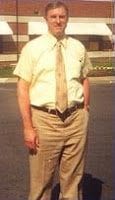
Paul Wilcher, Attorney and Government Corruption Investigator, Found Dead
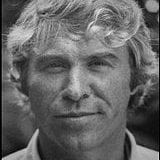
Investigative Reporter, Danny Casalaro, ‘Suicided’ Prior to Publishing “Something Really Big” According to Friends
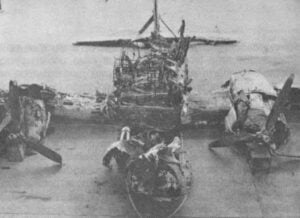
1980 Camarate air Crash: Assassination of Portuguese Defense Minister Adelino Amaro da Costa, who Planned to Expose the October Surprise
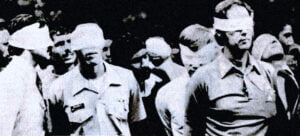
The October Surprise Of 1980 – news of the pending release of the 50 American hostages in Tehran


